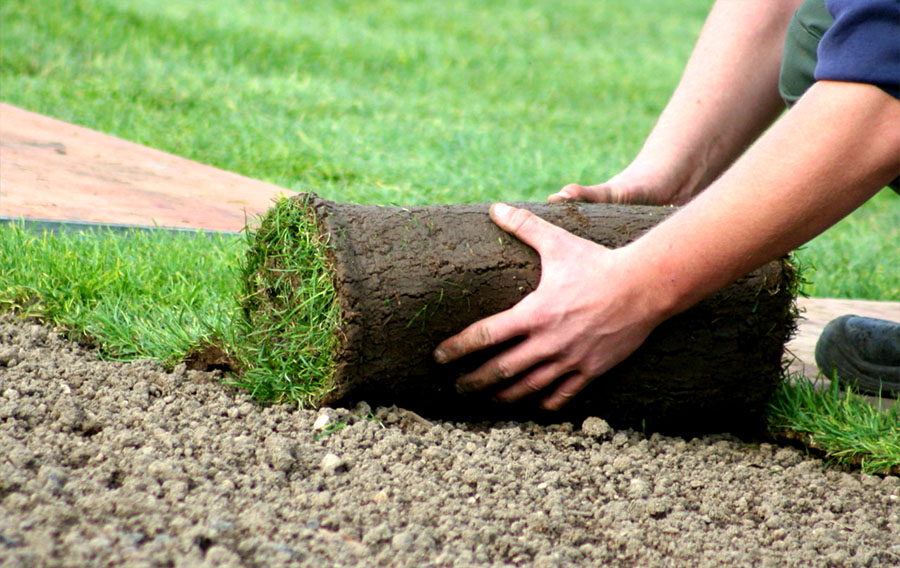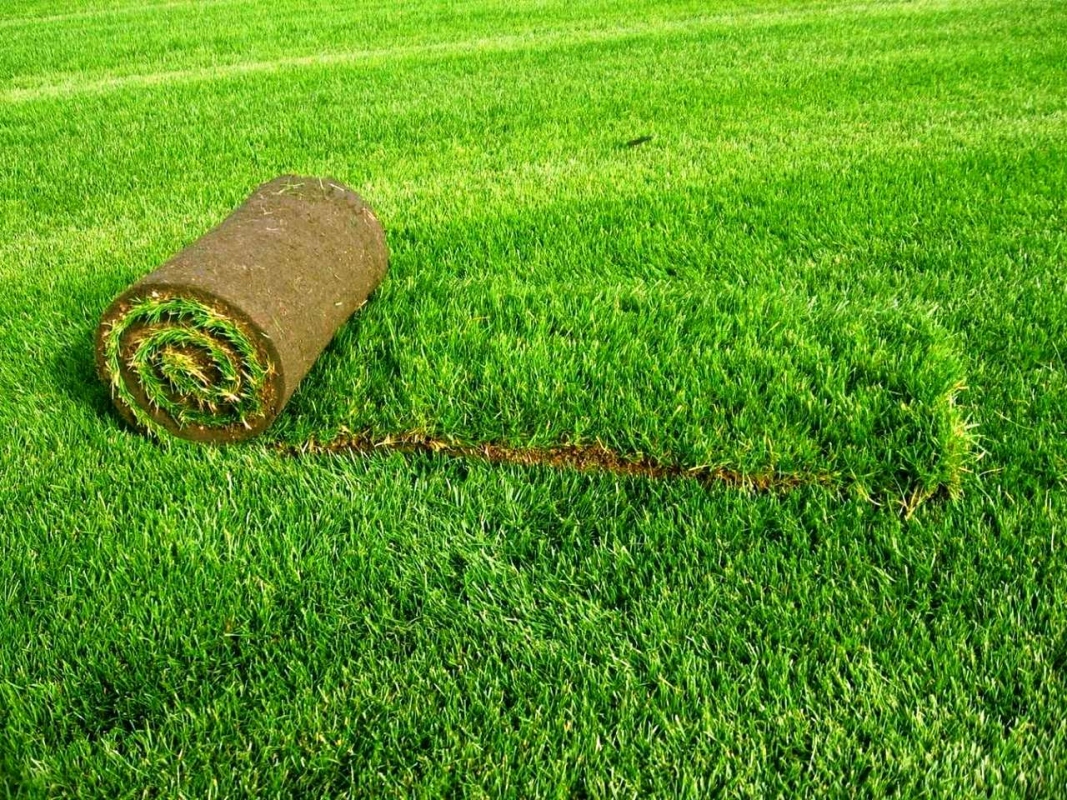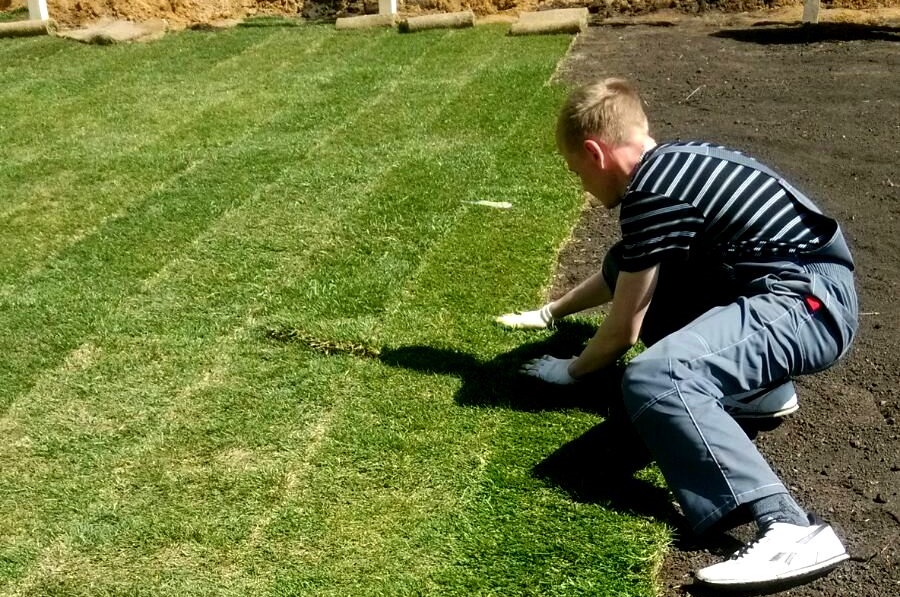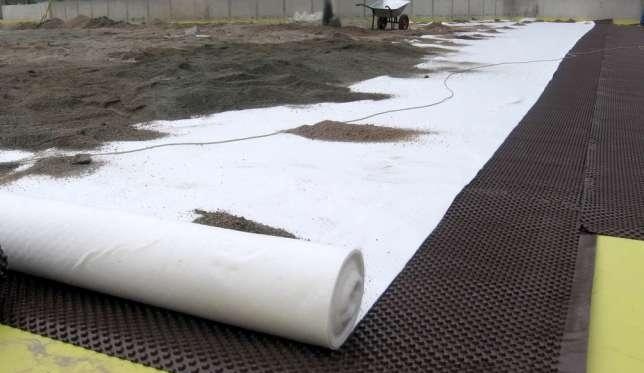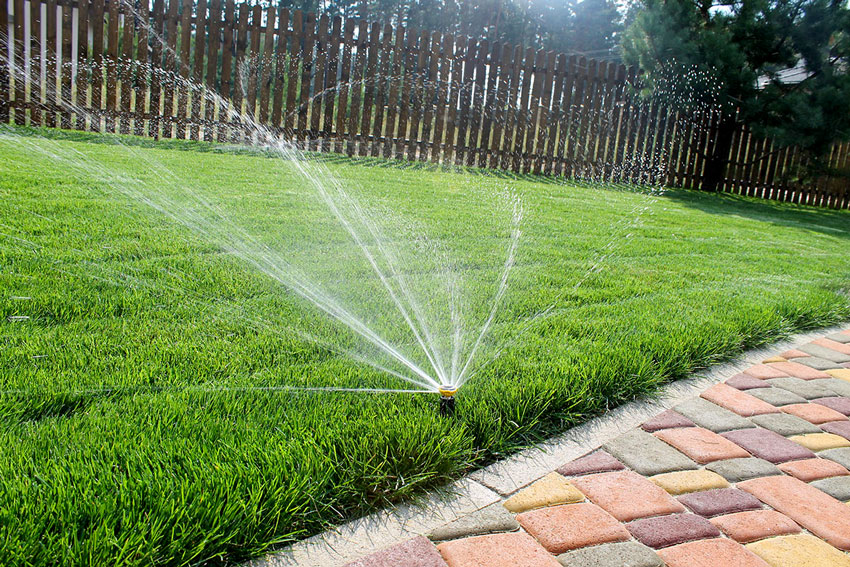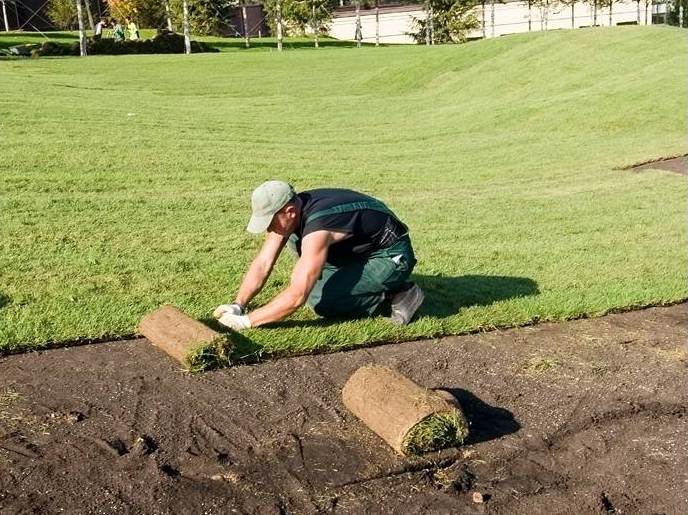Content:
One of the most important elements of landscape design is a roll lawn. If properly cared for, it will undoubtedly give the site a beautiful and expensive look. After all, evenly mown grass makes any garden plants spectacular. But laying rolled lawn grass requires some knowledge and skills. It is also necessary to remember and apply the rules of lawn care.
Lawn in rolls. Composition
Growing lawn grass on your own is a rather laborious task, which consists of several mandatory steps:
- it is necessary to choose the right seed material;
- prepare the soil;
- plant seeds;
- provide proper care.
And if a gardener does not have experience with lawn grass, even with a lot of effort, he does not always get the desired result. After all, the grass cover can emerge unevenly, which is why some parts of the lawn will look like bald spots. But you can avoid all these troubles by laying a ready-made roll lawn on the right areas. It looks like a layer of soil with grass growing on it.
Most summer residents think that this is a very dense turf layer, rolled up like wallpaper. In fact, this is so, but still it is a rather complex multilayer coating, the composition depends on the method by which it was grown. In order for the lawn roll to form a dense root layer, a fine mesh, geotextile or a thin layer of felt is used.
Types of roll lawns
According to the type of grass cover and soil composition, rolled grass is divided into three types:
- decorative;
- special;
- sports.
The most common type is decorative, in addition, it has many types. As a rule, this coating is located near residential buildings, dachas and other places intended for recreation. The roll contains special types of plants that can grow strongly in a short period of time, creating a chic green carpet.
Sports flooring contains grass types that can withstand stress. As a rule, such coatings are used in the construction of sports facilities and stadiums.
Laying roll lawn
In production, the lawn is cut into rectangles and rolled into rolls so that the root system of the plants does not dry out. When choosing a coating, you should pay attention to several aspects, even if it is the cheapest material:
- It must be clean, free of weeds. Let's say only 1% of weeds.
- The grass should grow evenly, that is, there should be no bald spots on the surface. The lawn must be cut on the day of shipment. The permissible errors in the width of the stripes should not exceed 10 millimeters;
- It is very easy to check the root system: pay attention to its color and how the plants behave when cutting the base. That is, there should be no damage.
- The cut base must have at least half of the grass roots.
Delivery
Delivery of rolled lawn from the manufacturer has its own nuances. For example, for transportation, you must use a car equipped with a refrigerator.The optimum temperature for transportation is about 15 ° C.
Laying technology
The first rule of styling is excellent mathematics. After all, you need to measure the area and calculate how much grass you need for laying. So, calculations must be made on the basis of the following data: 1.25 bays are enough to cover 1m2 of a plot, that is, to cover a plot of 10m2, 12.5 bays are required.
Even a non-specialist is quite capable of laying the lawn. To do this, it is necessary to level the required area, as well as to clear the earth cover and properly prepare the soil. If the ground cover of the planned site consists of clay soil, the top layer of the earth is removed first. The thickness of the removed layer should not exceed 0.5 m.It is clear that after the tokai procedure, a small depression will remain, in order to fill it, you need to stock up on the required amount of gravel, the layer of which should be about 10 cm.On top, you need to pour the same amount of river sand, an excellent substitute which can become an ordinary geotextile.
All layers must be well compacted and leveled using a building level. For tamping, it is better to use a small roller or wide board, which will evenly trample each layer. The last stage of soil preparation will be the laying of the removed layer.
After the work carried out, it is necessary to apply the necessary fertilizers and tamp everything again.
All preparatory work is carried out no earlier than a day before laying the lawn. Otherwise, the lawn may not take root, which will lead to drying of the grass and unnecessary clogging of the land.
Lawn spreading
The first rule of laying is that the lawn is laid from the place where the rolls are.
Particular attention should be paid to laying the very first bay, because it is along it that all the rest will be leveled. Work should be carried out on special wooden boards, and in strict order. Experts recommend refraining from walking on a freshly laid lawn for at least 10 days.
It is strictly forbidden to twist or bend the lawn. All unnecessary areas should be cut off with a very sharp garden knife, but all this should be done only after installation.
Equally important is the stage following installation. Its purpose is to easily tamp and check for different pits and bumps. They shouldn't be!
Agrotechnics
At the first stage, daily spraying is required, which must be carried out for at least 14 days. This action will keep the green carpet from drying out. There is no need to walk on the lawn until the root system takes root in a new place. Otherwise, it will turn out that the forces of time were wasted.
After 30 days, the coating can delight the owner with its softness and coolness. Here you need to be very careful to ensure that weeds do not fall on the surface of the coating. Watering should be done at least once every 10 days, provided there is no rainfall.
Also, four weeks after planting, the lawn needs to be mowed.
As soon as the snow has melted, the lawn must be dried. It is very important here to ensure that no puddles form on the lawn. To prevent them, rather deep punctures are made in the ground. It is also necessary to comb the "green carpet", it is best to use a rake for this.
Planting your lawn is best done in early spring or late autumn.If it is not possible to carry out a full range of planting actions, it is worth inviting a professional gardener. Only in this case a beautiful lawn will be forgiven in front of the house.
Pros and cons of rolling lawns
Among summer residents, there is an opinion that a rolled lawn can solve a huge number of garden problems, therefore, if finances allow, you must definitely purchase it.
pros
The most striking positive side of the green carpet is the very fast results. All in one day you can lay a lawn on several acres of land, and after a month on the lawn you can do whatever your heart desires.
Another positive quality is the unpretentiousness of the "green carpet". Especially if it was planted and grown in the same climate.
Minuses
One of the main negative qualities of the coating is its cost. But that's not all. Rolled lawns require perfectly prepared soil. If the soil turns out to be too hard or, on the contrary, loose, the "carpet" on it simply will not take root.
When choosing a lawn, you should pay attention to the price category, for example, a cheap lawn may be too young. The ideal age for sale is three years from the date of planting.
In the Moscow region, the production of lawn in rolls is in the Ramensky district, when buying from the manufacturer you can get a good discount.
